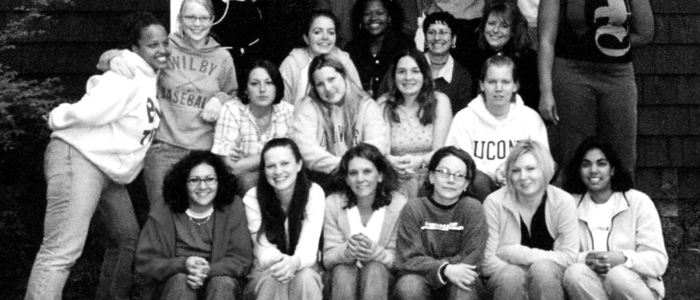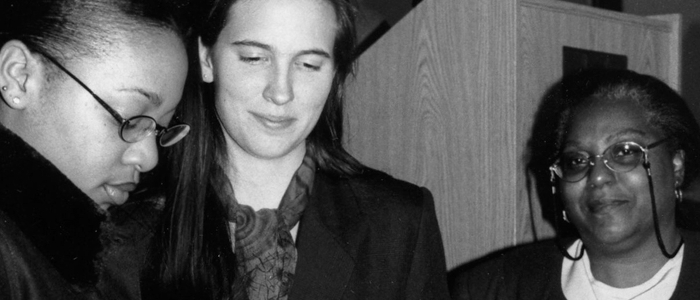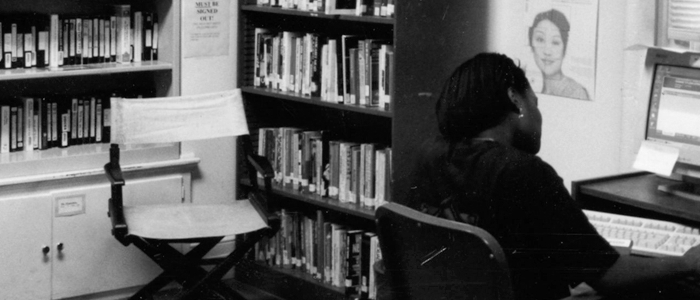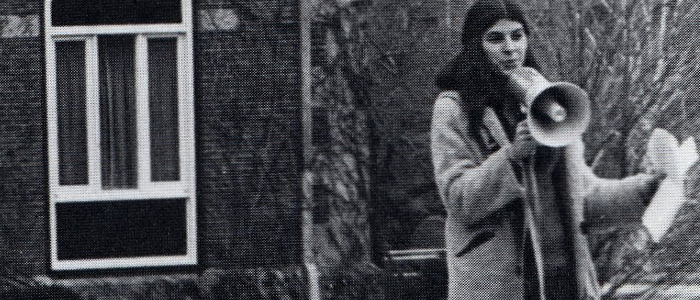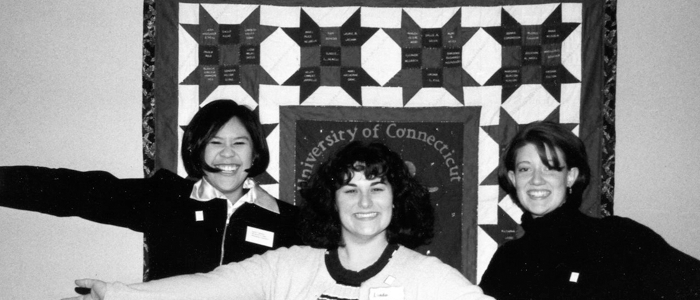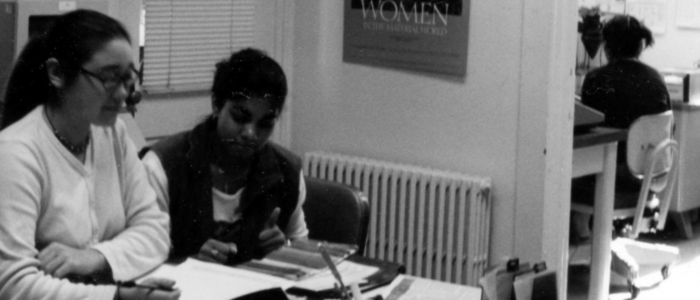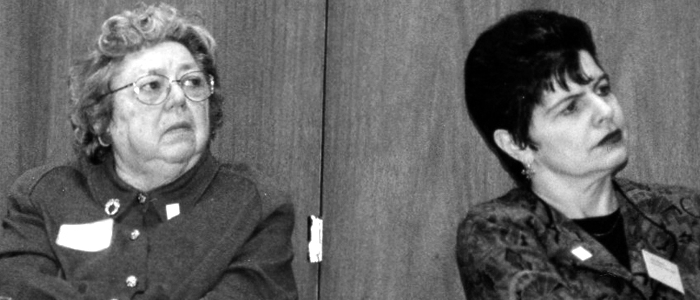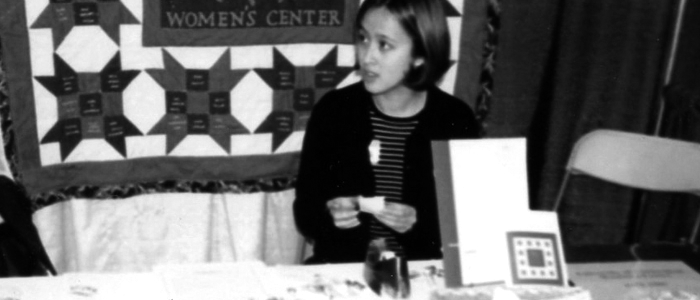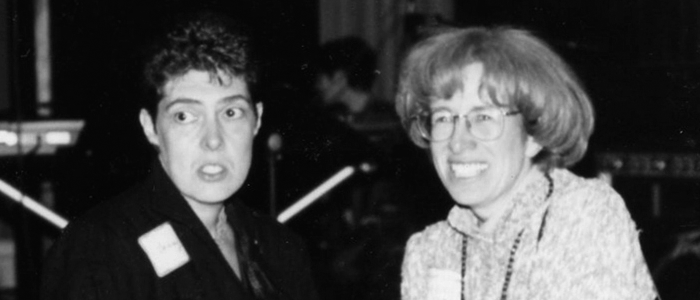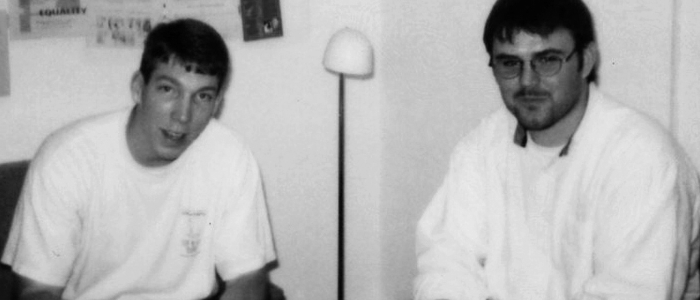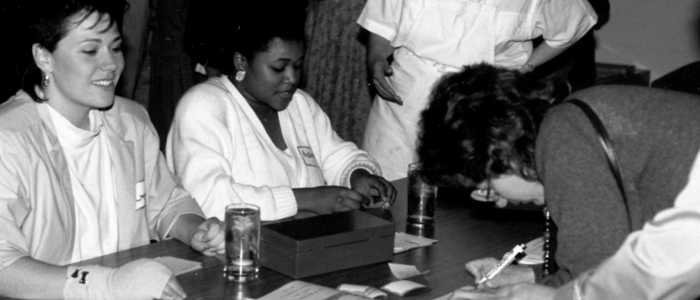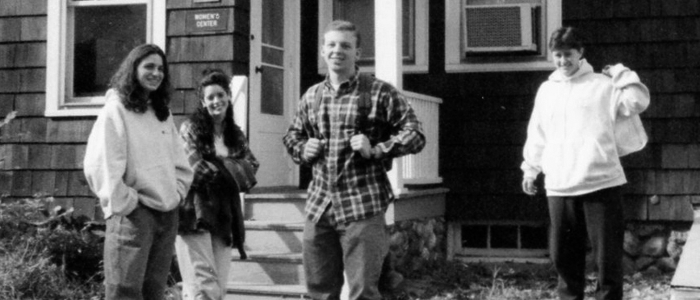The Women’s Center was formally established in 1972, although our existence is clearly thanks to the dedication and activism of the feminist community which was well established before that. Here is a portion of the story, but we know that this could not reflect the diversity of perspectives and voices of all of those who were involved.
Bolstered by the national climate of the civil rights movement and the women’s liberation movement, a group of students, faculty, and community members began organizing in the late 60’s in an effort to raise awareness of the issues facing women on campus. This led to the formation of the Free Women’s Collective in 1972, which had establishing a Women’s Center as a primary goal. In March of 1972, Elizabeth (Betty) Roper, the Director of the Continuing Education for Women program provided temporary space in the Bishop Center for the Center. She also was responsible for overseeing the hiring of the first full-time Director.
In the first two years of our existence much of the focus was on providing permanent and adequate space for the Center. At the same time, there were several critical moments of feminist activism occurring on campus around accessible facilities, affirmative action, and discrimination. As part of that activism, a number of collectives formed. These collectives brought together individuals who were interested in and/or impacted by specific identities or life circumstances. They included the Black Women’s Collective, the Child Care Collective, the Counseling Collective, the Lesbian Collective, the Library Collective, and the Writers’ Collective. Over time these collectives became either the foundation for free-standing organizations, such as the Rape Crisis Collective which became the local sexual assault crisis center, or were integrated into what is now known as the Women’s Center’s Board of Advisors. Our commitment to creating space for dialogue among and between identity groups continues in the work of our Women’s Advance Conference Planning committee and our Women of Color Events Planning committee.
Our herstory tells the story of what can happen when we build alliances and support networks in the name of social justice. We hope that if you find something in our herstory or our current work that speaks to you, that you will stop by the Center and explore the community that celebrates women’s diversity and strengths, while actively confronting societal challenges and obstacles through activism sand change.
Women’s Center Timeline
| 1972-1973 | Women’s Center is established. It includes a library, counseling services, referral services, and rape crisis support and advocacy. |
| 1975-1976 | Created 15 collectives serving needs of gay students, divorced women, rape survivors and black students. |
| 1976-1977 | Establishment of literary magazine. Center is recognized as a state resource for women. |
| 1977-1978 | Publications of several topic specific booklets and general newsletter. Establishment of Information Clearing House and Brown Bag Rap. |
| 1978-1979 | Expanded affiliation with state and national organizations. Involvement in National ERA March. |
| 1979-1980 | Chairing a Day of Metanoia after a brutal assault on campus. Rape Crisis Collective leaves the Women’s Center to become a community rape crisis center serving the Northeast region. |
| 1980-1981 | Launched pornographic awareness program. Instituted a series of sexual harassment workshops. |
| 1981-1982 | Rape Education Program established. |
| 1985-1986 | Started Women’s WHUS Radio Collective. Offered career counseling series. |
| 1986-1987 | Publication of CT Peer Project on Teen Pregnancy, Education, Attrition. Involvement with Project on Women and Technology and CT Women’s Network. Major advocacy efforts to improve child care on campus. |
| 1987-1988 | Co-sponsored two national conferences, “Global Perspectives: Local Action, Equality, Development, and Peace” and “Women, Work, and Technology.” |
| 1988-1989 | Publication of “Inching Toward Equality” and “Small Indignities/Large Affront: A Qualitative Study of Graduate Life.” Establishment of Vocational Equity Research Training Evaluation Center with School of Education. |
| 1989-1990 | Publication of three research reports (Double Jeopardy – The Precarious Status of Women of Color, Child Care – Everyone’s Concern, and Traditional Dreams in a Changing World: Balancing Work and Family). |
| 1990-1991 | Publishing of “It’s Our Shop Too!” Chairing a campus Day of Metanoia committee. |
| 1992-1993 | Establishment of Mandatory Orientation Training for all incoming students on sexual assault and acquaintance rape. Expanded support groups for students, services for women of color, and advocacy services. |
| 1990-2000 | Publication of three research reports (Double Jeopardy – The Precarious Status of Women of Color, Child Care – Everyone’s Concern, and Traditional Dreams in a Changing World: Balancing Work and Family). Planning Participant for the 100 Years of Women Celebration. Initiated ongoing sexual assault training for athletes. Involvement in “We Won’t Go Back” rally in Washington, DC. |
| 2000-2001 | Awarded Department of Justice Grant to combat violence against women on the University campus. |
| 2001-2002 | Helped organize the first Cultural Explosion and Love Your Body Day. |
| 2002-2003 | Awarded the “Advancing the Status of Women” award from the Soroptimist International of Willimantic, CT and recognized at the Connecticut Women’s Education and Legal Fund’s 15th Annual Hosted the 16th Annual Women’s Health Conference with the School of Nursing. |
